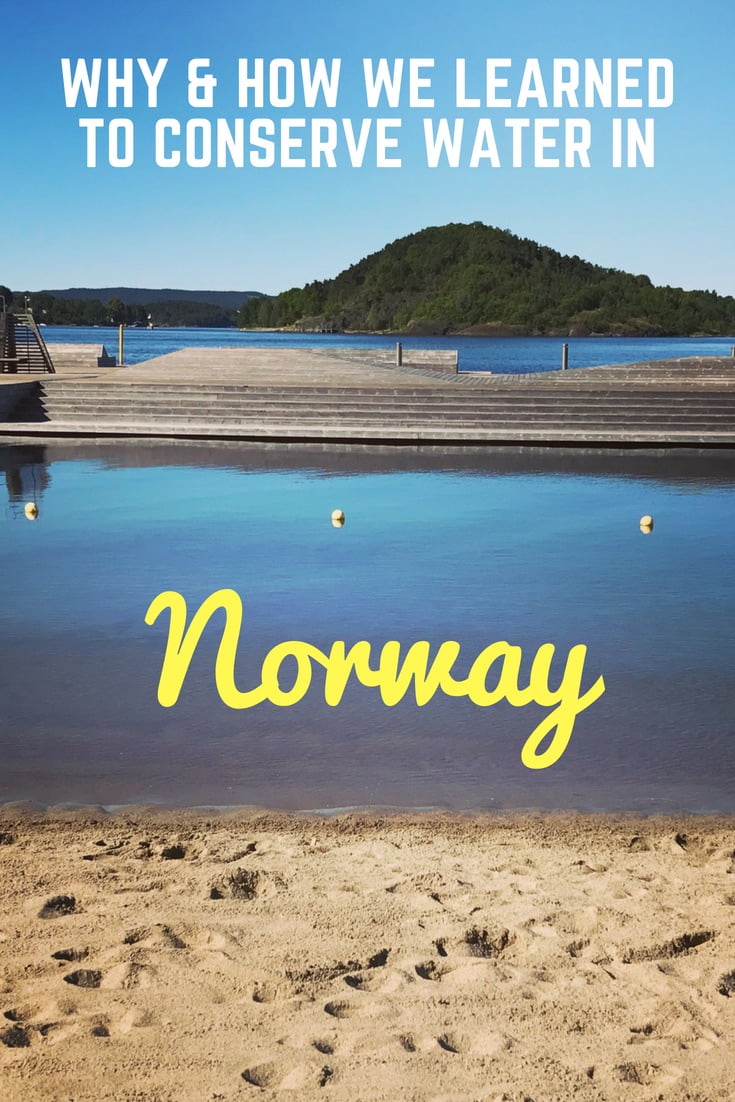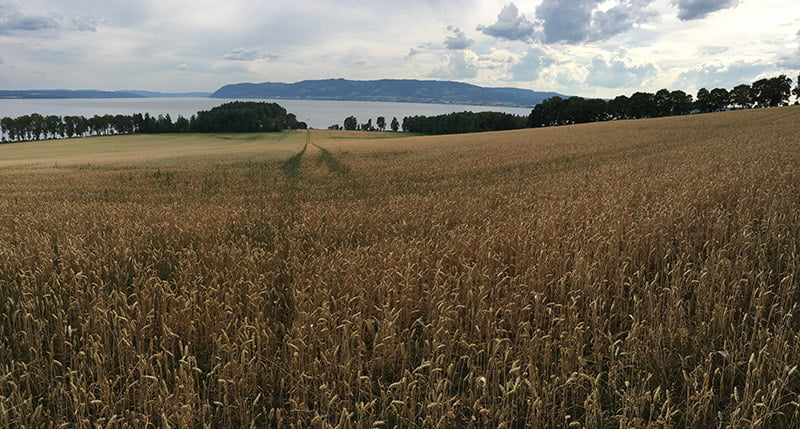
Why and how we had to quickly learn to conserve water in Norway.
When we were in Norway four years ago we came in October, the shoulder season, because that’s when the flights were best.
Like most first time visitors, we spent a few weeks along the western coast – exploring the fjords and hiking in and around waterfalls – so our image of Norway was based on that experience and the wintery images pervasive in any internet search of the country.
Our second time in Norway is much different. We are here for almost three months for a house sit in the Oppland region near the Swedish border. It’s mostly lakes and farmland hugged by vast tracts of forest and trails.
Sleepy sheep sun themselves in the road, and wild blueberries and raspberries dominate any field not taken up with farmland or trees. There are more lakes than waterfalls.
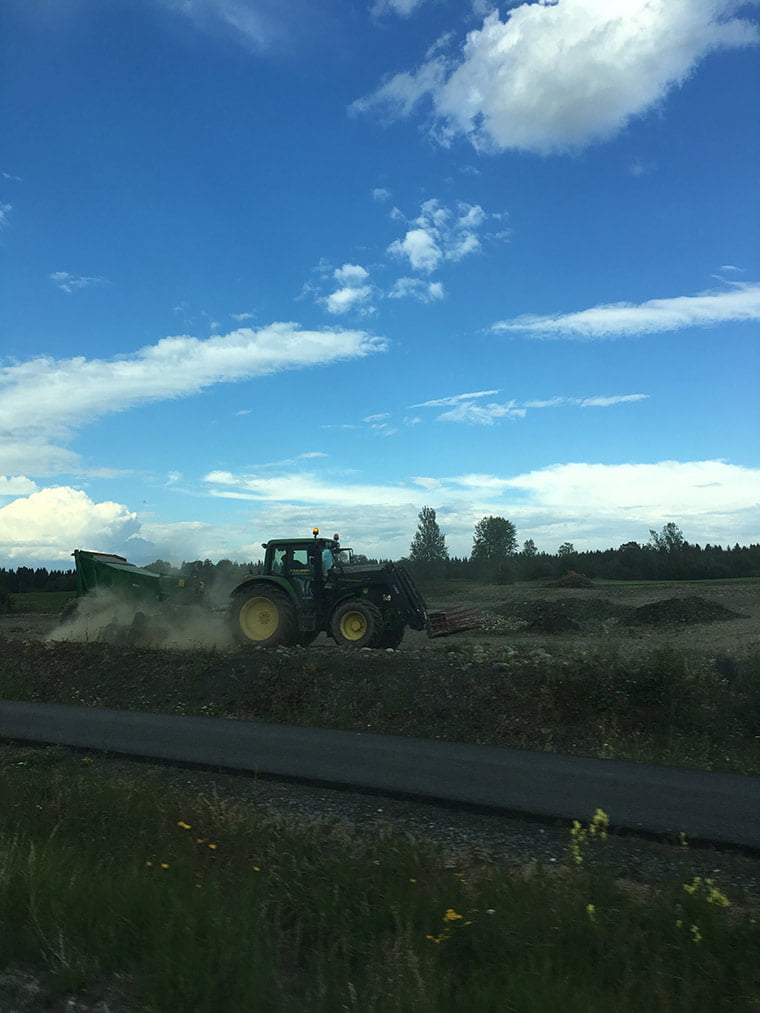
The homeowners we are house sitting for used to live on the rainy coast and told us that Oppland is sunnier and drier than the coast, but what we couldn’t have foreseen is record-breaking temperatures and near drought-like conditions.
Reportedly it’s the driest summer since 1947, and the impact on the farmers is enormous.
They are currently dipping into their winter stocks to feed their animals. An early slaughter has been discussed, which would drive down the price of beef and raise the price of milk and cheese.
The fields of grass are crisp and brown. We haven’t so much seen rivers but have seen reminders of them – their crooked and toothy lines zagging beneath hand hewn log bridges, or subtle depressions sinking into the otherwise undisturbed landscape.
Driving through the ranging countryside gives us momentary bursts of joy when we see a few brush strokes of autumn yellow in the trees. This quickly turns to sadness when we realize that it’s heat stress and not an early Autumn.
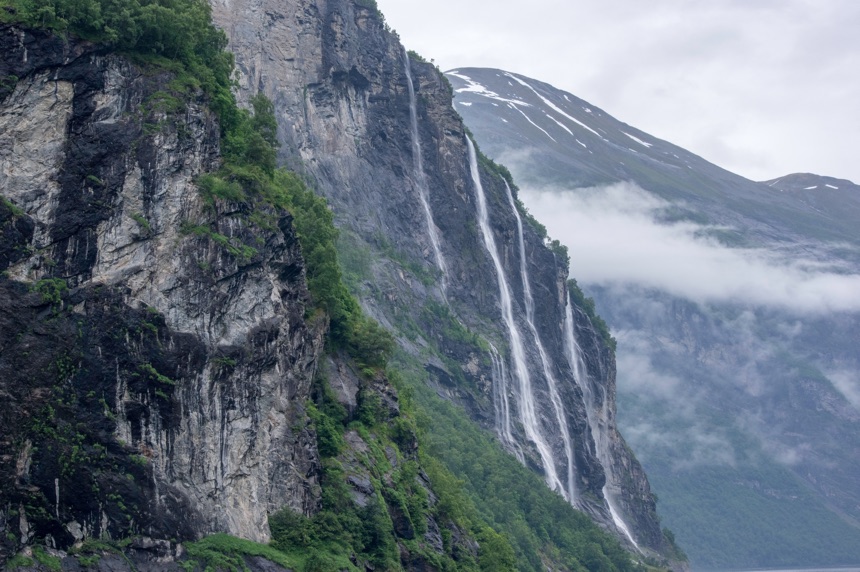
It was with much surprise that the doorbell rang after being here undisturbed for a month – we are living amongst a small cluster of 5 houses and Norway being Norway, have barely spoken to the neighbors.
Our house gets its water from a well that is shared by one other house, and it’s the owner of that house who stood on our doorstep.
He stood at a distance, sunburned and shirtless and explained what we already know about the well and about the heat and the drought, but he added a detail that we didn’t know– the well was running low. Very low.
We need to conserve water.
He gave me some very obvious tips about how to conserve water – not showering every day, not watering the garden and only doing laundry when absolutely necessary.
We were already doing these things, so I did a quick Google search to see how Cape Town, South Africa is handling their current water crisis to see if we could do more. It turns out we can all do a whole lot more than not watering our lawns.
Here’s what we learned:
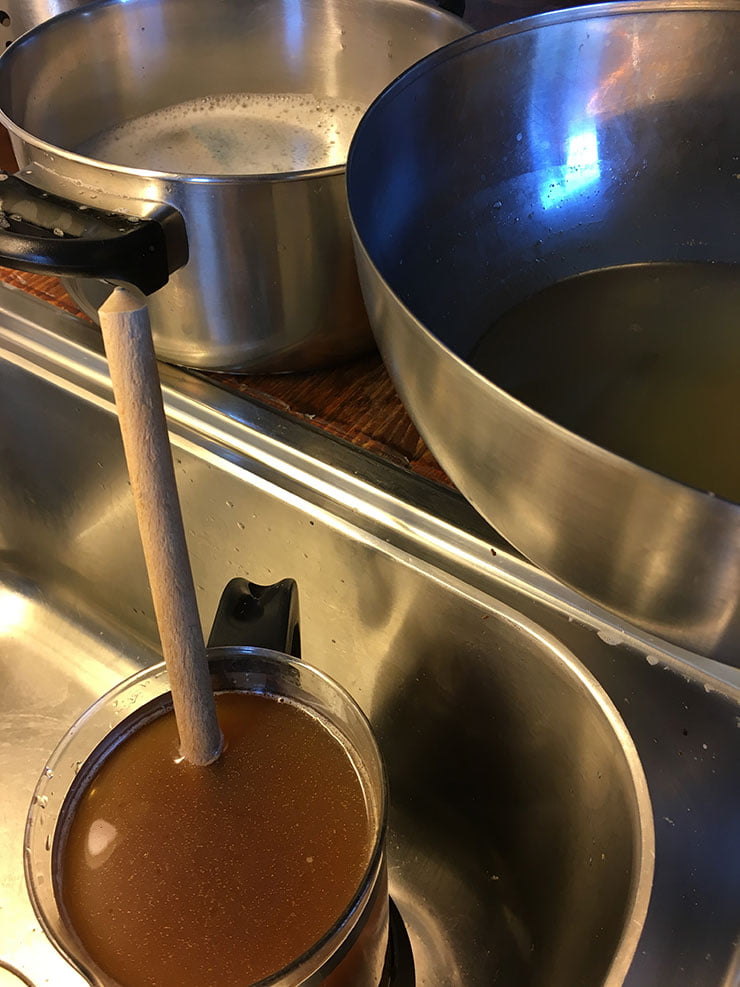
Military-style shower. This one saves a ton of water. That and not showering at all, of course. What is a military shower? It’s where you turn on the water just enough to get wet and then turning it off again.
Then you soap up and then turn on the water to rinse yourself. It’s really simple and saves tons of water. I’ve been showering like this for a few weeks now, and I’m not sure I would go back again.
Eliminate running water. One of the biggest surprises for me is how much water we waste while letting water get hot – either in the shower or in the kitchen.
One way around this is to simply place a bottle under the spout while you wait for the water to get hot. I did this but had to get new bottles to hold it all. It was easily more than a liter of water that would have gone down the drain every time I waited for the water to get hot.
The water you save can be used for anything – drinking, washing, cooking. We found it best to heat the water we needed for washing on the stove. That way we weren’t staring at a hundred bottles of water waiting for various things.
Buckets! A bucket in the shower was the best way to capture water while we waited for it to heat up. We placed a bucket at our feet while showering and were pretty amazed at how much water fell into it.
It was totally enough to water the tomato plants every day. The water we use to rinse our dishes is also captured for similar purposes, but you have to make sure it’s not too soapy.
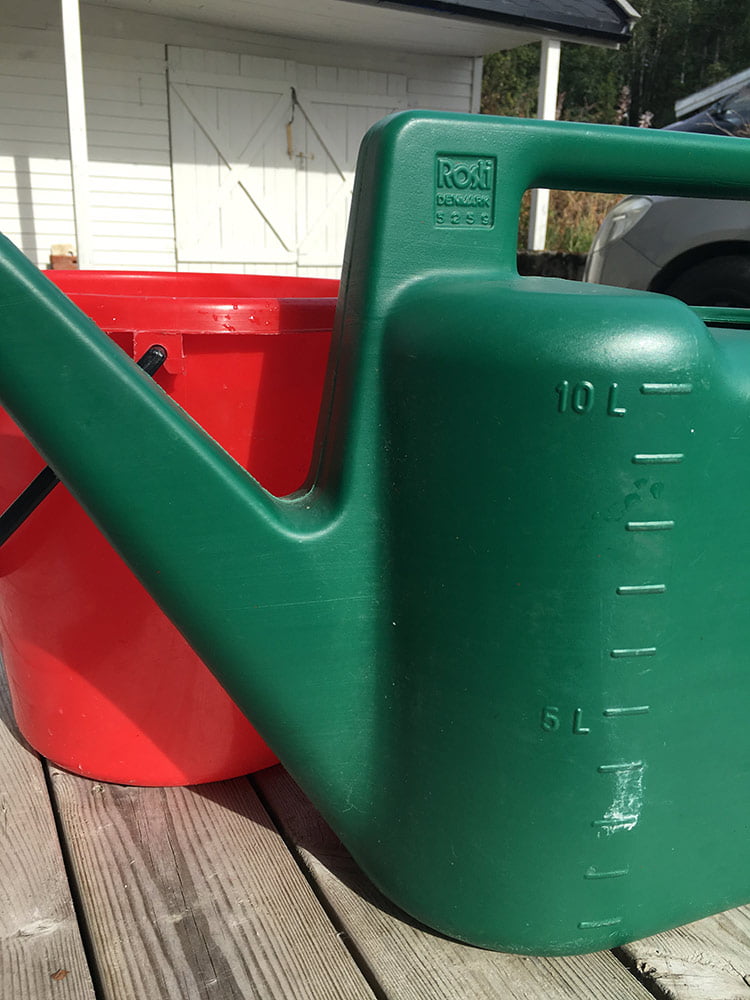
Hand Washing.This may freak out many of the germophobes out there, but for the majority of your day you can use hand sanitizer to clean your hands. Only wash your hands with soapy water when you absolutely have to.
Dish Washing. This one is tough. People had recommended using paper plates, especially if you are in a place where you can use those plates to start fires for cooking/heating. Or if you can recycle them.
But to us, this is just causing another problem. Our solution is to heat up a pot of water for washing, use the minimum of water for rinsing and capturing that grey water with a large cup or bowl. We use the water from that to rinse the flatware.
Laundry. Postpone doing your laundry as much as possible. This means wearing the same clothes multiple times.
If they need a refresher, it’s recommended to spritz them with a vinegar solution and hang them out to dry in the sun. This is remarkably effective, and the odor isn’t as repulsive as it may sound.
The Toilet. Everybody knows the “if it’s yellow, let it mellow” which is a gross and crude way of saying that you shouldn’t flush every time you pee. Even the most modern and efficient toilets use over a gallon per flush.
Older toilets waste between 3-7 gallons per flush. And when you are facing a water crisis, even a gallon of water per flush seems extravagant.
We were recently in Bergen for a few days with a friend. Our house rental wasn’t on a well and the coast is flush with rain, so there was no question of having enough water available to us.
We drove through the rain to a farm café for lunch. We luxuriated in the dry heat from the wood fired stove that would eventually cook our scratch made pizza.
We talked to the staff about the unusually hot and dry weather in the rest of Norway and they would nod in that sympathetic and knowing way of people who are acquainted with say, the war in Syria, or a polluted water in Flint, Michigan.
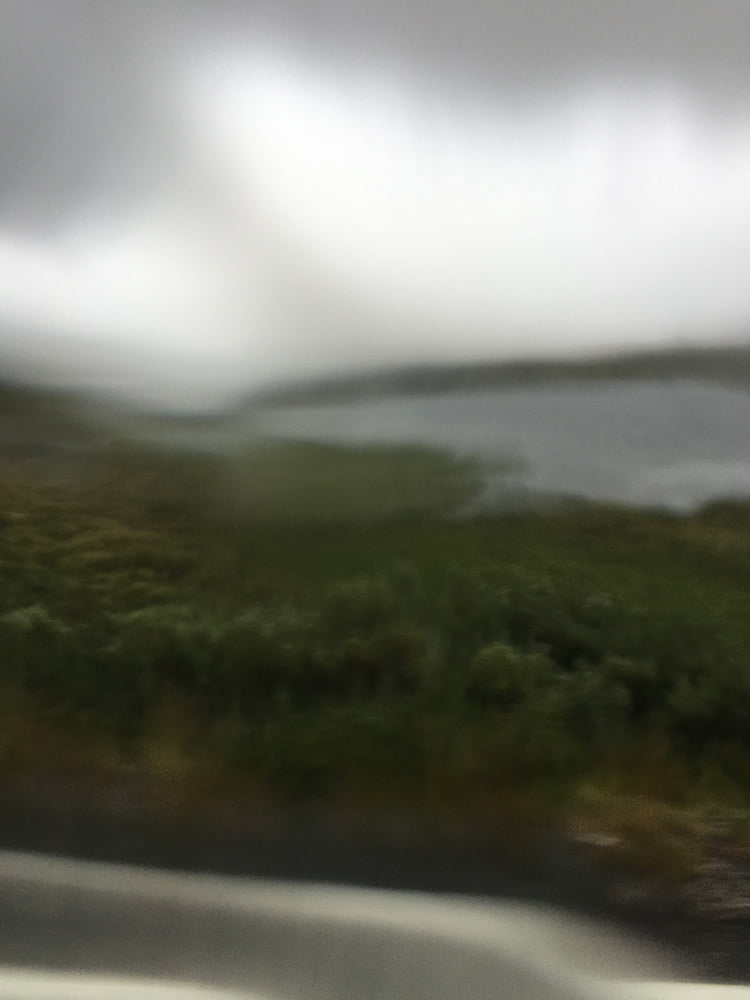
Having grown up around the Great Lakes region of the United States, water conservation hasn’t really been top of mind. It appears the same is true of Norwegians.
A drive through Norway when there isn’t a drought will show you an embarrassment of waterfalls and rivers and rain.
It’s hard to visualize a drought in your country when you are looking through a rain-spattered window at a fjord or a lake. Which makes it difficult to justify conserving water by taking a military style shower and not watering your lawn.
But this is one of the greatest benefits of travel – it allows you to see life from a different perspective and challenges you to change your current assumptions.
Taking a long shower or letting the water run until hot doesn’t feel like a luxury to me anymore. It just feels irresponsible. Something I never thought I would feel, especially in Norway.
